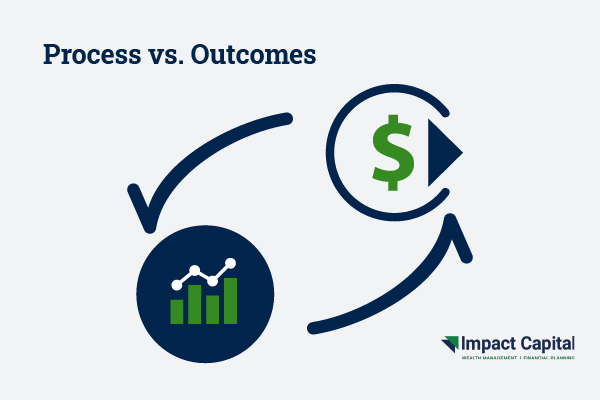
Volatility returned to the markets last week. More on that later. If you haven’t read Annie Duke’s book1, “Thinking in Bets: Making Smarter Decisions When You Don’t Have All the Facts”, you are really missing out. This blog post is inspired by her book and borrows the themes she discusses in the book.
If you ask an investor for their best decision this year, they will likely recall their most winningest trade. This sounds logical at first, but are our best outcomes also our best decisions? I would suggest there is a difference between the two. Need proof?
ASSUME YOU BECOME INTOXICATED AND DRIVE HOME. YOU MAKE IT HOME SAFELY. YOU EXPERIENCED A GOOD OUTCOME. WAS IT A GOOD DECISION?
I see the same thing happen all the time in the investing world. Investors can experience good outcomes without having a great decision process (and vice versa). When only a handful of stocks – stocks everyone has heard of before (AAPL, AMZN, FB, MSFT, GOOG) – outperform everything, owning anything else seems dumb. It’s obvious, right? They only go up. If they drop, it is a buying opportunity. Why do we think that? Because it worked in the recent past. It is very easy to take what worked in the past and project it into perpetuity. In doing so, we are only considering, and positioning our portfolio for, only one possible outcome.
Can you picture a market where those stocks underperform and their rallies would be selling opportunities? Can you picture a market where non-US stocks outperform US stocks? Can you picture a market where interest rates go up? If you can’t, you’re in a tunnel of your own creation. You are in the hindsight bias tunnel.
PER ANNIE DUKE: “HINDSIGHT BIAS IS A TENDENCY, AFTER AN OUTCOME IS KNOWN, TO SEE THE OUTCOME AS BEING INEVITABLE VERSUS A PROBABILISTIC ONE.”
The future is unknowable. When building a portfolio, we must entertain all possible futures. We evaluate those futures and their associated probabilities in advance and allocate our resources accordingly. We are disciplined when it comes to sticking to the investment plan upon which we agreed. When one asset class outperforms by a wide enough margin, we sell it to buy those asset classes that haven’t risen as much.
Stocks are worth what people think they are worth. Large groups of people can exhibit hindsight bias and push asset prices accordingly. When tech stocks fell this week, we weren’t surprised. The rise they’ve experienced from the March low has been historic. There have been many signs of the froth, but here are some recent examples:
- The ratio of bullish stock options being purchased versus protective stock options being purchases has never been lower. Ever.
- Tesla’s (TLSA) market valuation was recently worth more than the two top-selling carmakers in the world combined (Toyota and Volkswagen). Tesla made 367,000 cars last year out of the 90 million that were sold. TSLA stock was up 480% this year earlier this week.
- Apple’s (AAPL) market valuation was recently worth more than the combined market valuation of the Russell 2000 small cap index. To be clear, the Russell 2000 is made up of 2,000 stocks. AAPL stock was up 75% this year earlier this week.
WHAT SHOULD I DO?
Being disciplined, we rebalanced portfolios a couple weeks ago by selling what had gone up (stocks) and buying what had not gone up as much (bonds). If your neighbor owns shares of AAPL/AMZN/MSFT/FB/GOOG, my advice would be the same: rebalance. If they are looking for a longer conversation on the topic, we started a blog series on our website (you can find it HERE) and social media pages this week!
1 Amazon Store: “Thinking in Bets: Making Smarter Decisions When You Don’t Have All the Facts”
STAY IN THE LOOP
